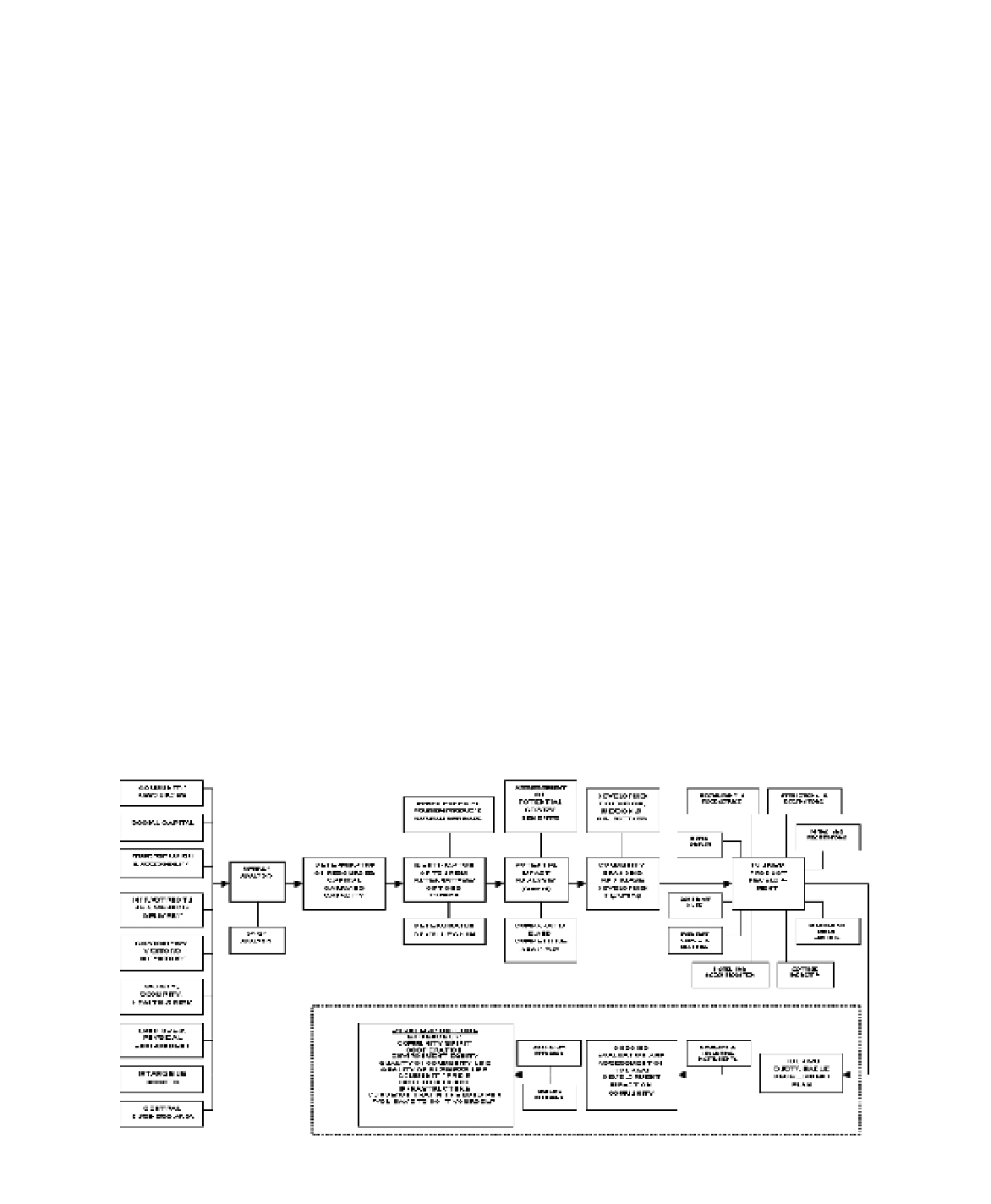Travel Reference
In-Depth Information
4 RESEARCH DESIGN
population, businesses have closed or relocated.
The physical environment is deteriorating, the
community's spirit is low, and the agricultural base
had challenged by world markets and technology.
Many researchers relate their study of small
towns with globalization challenges (e.g. Courvisa-
nos and Martin, 2005), urban sprawl (e.g. Lambe
2008; Leinberger, 2005), aging population (e.g.
Nicholls, 2005; Lambe, 2008), tourism development
(e.g. Altinay and Hussain, 2005), industrial develop-
ment (e.g. Leinberger, 2005), and entrepreneurship.
Though, many small town planners have identi-
fied the small town potential assets both tangible
and intangible before the place became completely
silent. They repackage the resources of small town
into tourism products that attract millions to come.
Small town research studies have been a popular
subject in western countries. According to Lambe
(2008), towns are divided into few categories:
•
According to Brewer (2000), ethnography is the
study of people in naturally occurring settings or
'fields' by methods of data collection which cap-
ture their social meanings and ordinary activities,
involving the researcher participating directly in the
setting, if not also the activities, in order to collect
data in a systematic manner but without meaning
being imposed on them externally. This research
method is used because the information is new and
unfamiliar, besides the information requested is too
subtle to be interpreted by quantitative techniques.
The data collection is done through in-depth inter-
viewing, observation and document review. This
research is using ethnography method base on a
case study of a small town.
There are four types of data collection methods
in this study: checklist, interviews, direct observa-
tion and participant observation. In the field-work
composition: a researcher's drafts (log-book),
transcripts and recordings of interviews with
respondents, videotapes and notes from direct field
observations, and checklists.
The secondary data is gathered from the docu-
ments from the government. The report of overall
economic performance also can be found on the
website. The secondary information was gath-
ered from previous research and journals, articles,
blogs, newspaper, films, statistic data, documents
found in the website and magazines.
As the centuries move on, small towns are
being abandoned. Deterioration of small towns is
especially significant in developed countries. The
population of small towns has migrated to great
commercial and industrial areas and cities. Not
only have the communities in small towns lost
Small towns that are recreation or retirement
destinations
•
Small towns that have abundance of natural
assets
•
Small towns with historical, cultural or heritage
assets
•
Small towns with college campuses
By recognizing the social and economic benefits
of tourism, many town planners even the coun-
try planners have had goals that involve tourism
development.
5 STUDY FRAMEWORK
Please refer to Figure 1 Study Framework. This
research framework shows the flow of the research
Figure 1.
Study Framework.




Search WWH ::

Custom Search